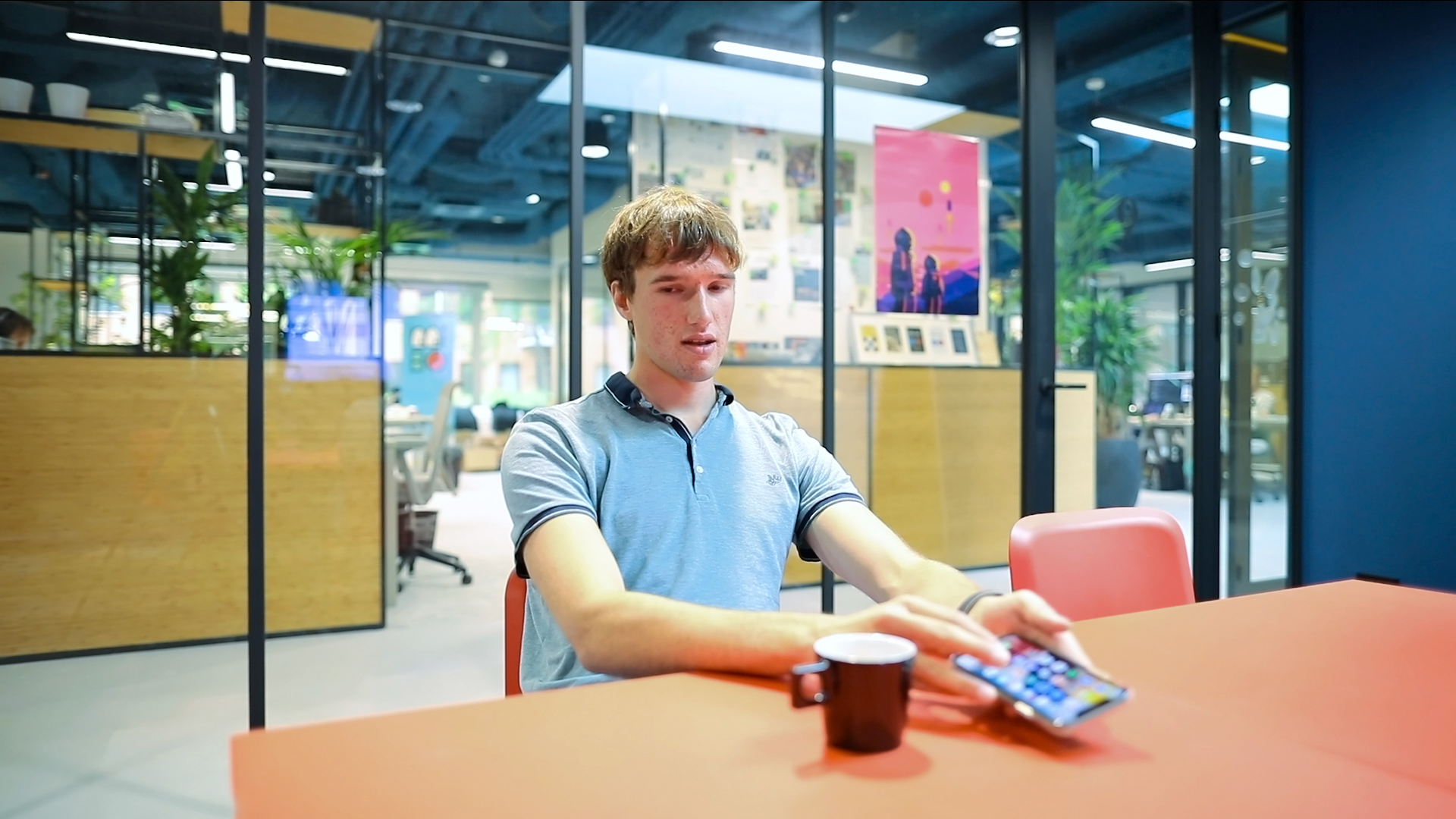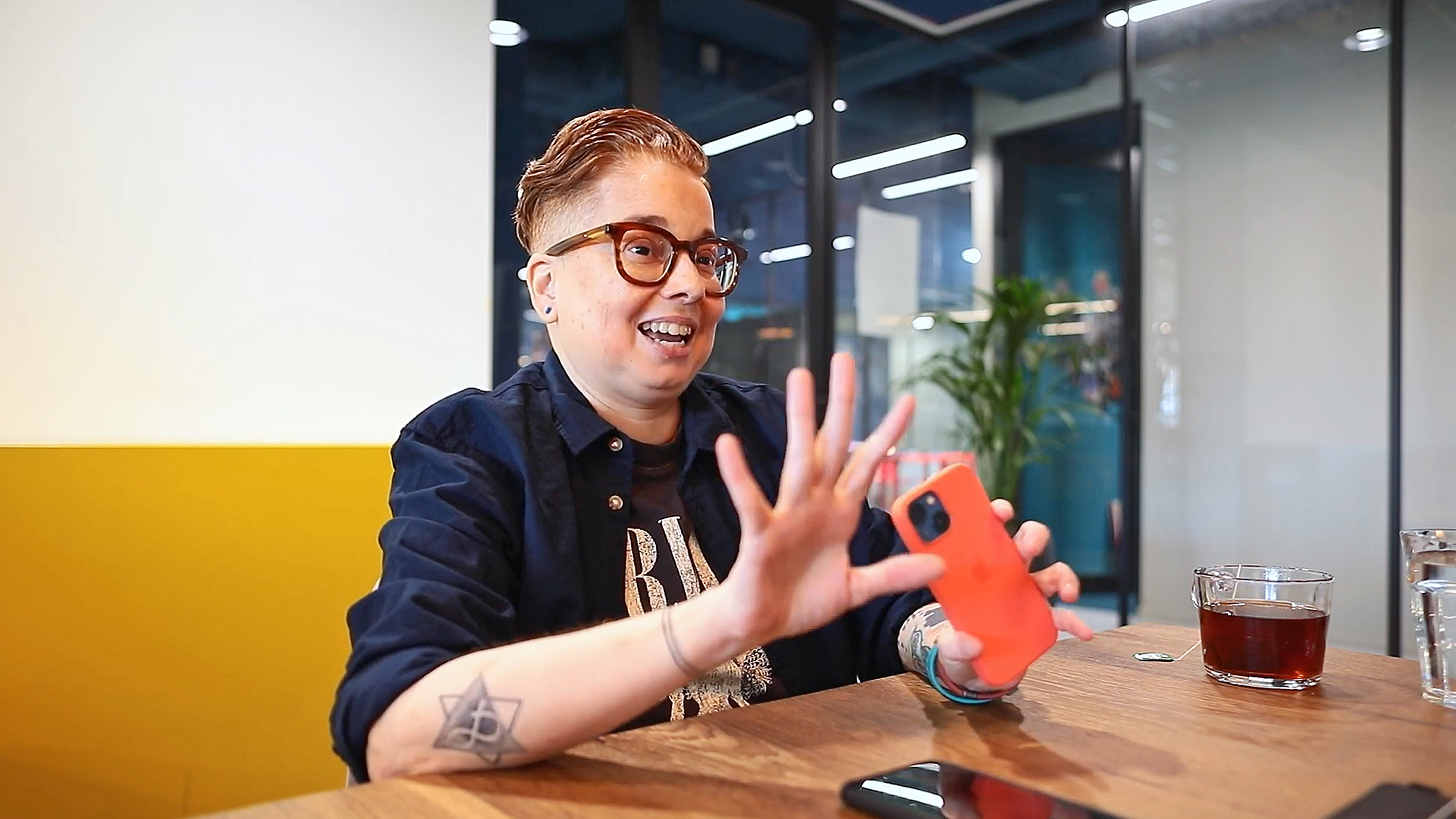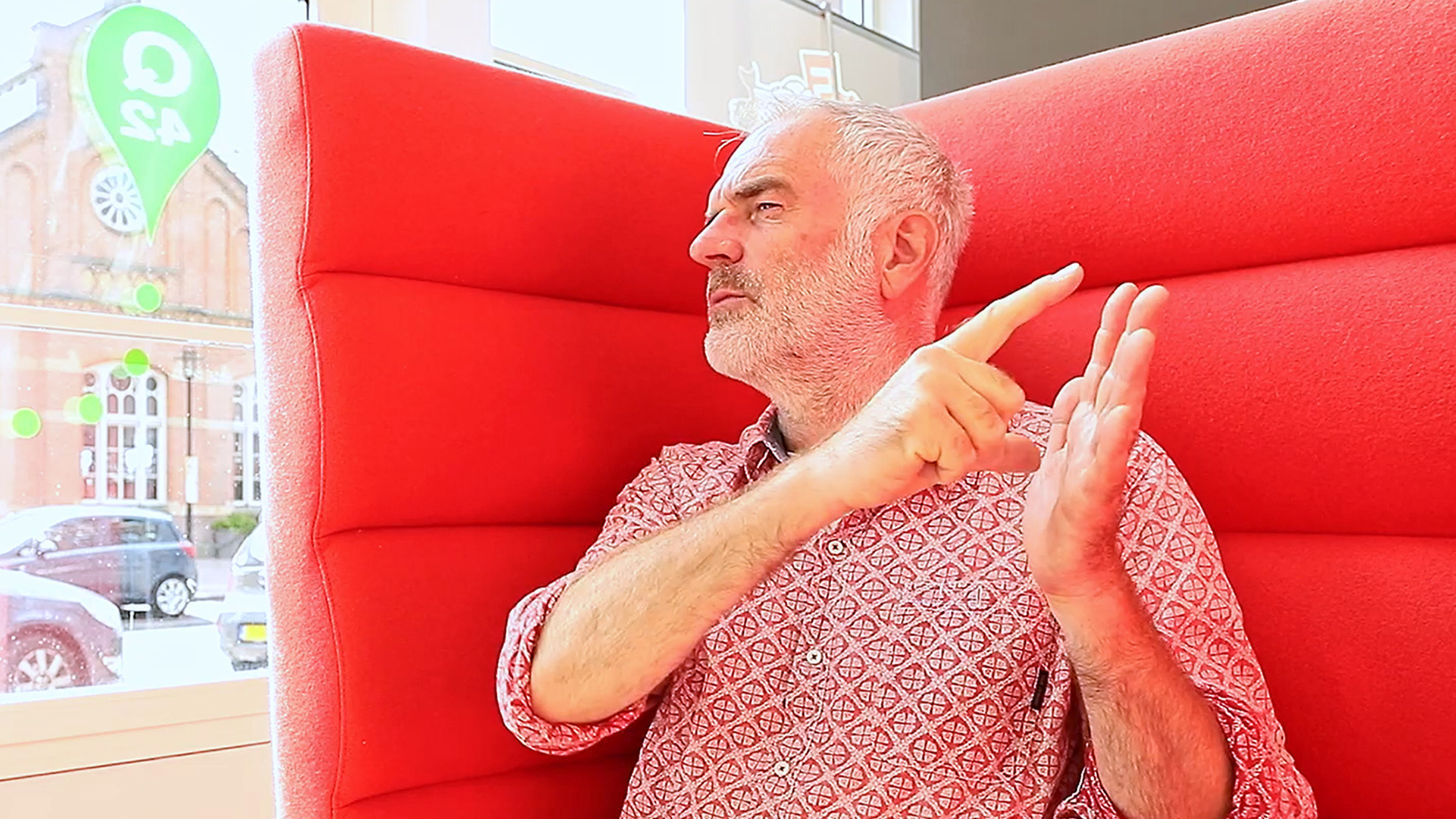I try to reduce overstimulation on my phone
Colinda had an accident in 2018 that led to a brain hemorrhage. This caused pressure on her meninges, causing her to partially lose her sight. After four operations, one eye has recovered. She sees blurry in the other eye.
Colinda now works as a freelancer and advises companies on how to grow from scale-up to a larger size. Since the accident, Colinda has suffered from overstimulation by light, sound and tension. That is why she has made adjustments on her mobile (iPhone) and laptop.


What accessibility features have you set up on your phone?
Due to my limited vision, I have adjusted the font size so that it is very large. Sometimes I wish I could make it even bigger.
To reduce stimuli, my mobile phone is set to dark mode by default. I regret that some apps do not adapt to my preference for dark mode. Fortunately, more and more apps offer this mode.
In addition to dark mode, I have greatly reduced the light intensity on my cell phone. The less light I see, the longer I can function.
For me it's always a trade-off between getting too much light in and readability. Of course, if my screen is too dark, I can no longer read it. It would be nice if I could make the letters a bit more yellow, just like the night mode on your laptop. If I could do that on mobile, I would turn up the light intensity a bit.
I let my mobile speak texts and messages as much as possible. For example, when someone calls me, the caller's name is spoken. And I record as much as possible. When I want to send a message, I speak the text to send it in written form. I sometimes mistype because one of my eyes is not functioning properly. Speaking a message is much faster.
I don't use voice-over, because then everything is read aloud. Even unimportant things. I don't like that.
As you can understand, all these settings are necessary for me to function properly.
More interviews with end users


How many hours a day I use my phone? How many hours do you use your eyes?
Jesse
Read the interview with Jesse








